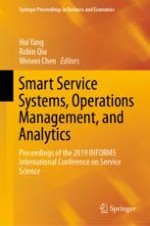2020 | OriginalPaper | Buchkapitel
Predicting Metropolitan Crime Rates Using Machine Learning Techniques
verfasst von : Saba Moeinizade, Guiping Hu
Erschienen in: Smart Service Systems, Operations Management, and Analytics
Aktivieren Sie unsere intelligente Suche, um passende Fachinhalte oder Patente zu finden.
Wählen Sie Textabschnitte aus um mit Künstlicher Intelligenz passenden Patente zu finden. powered by
Markieren Sie Textabschnitte, um KI-gestützt weitere passende Inhalte zu finden. powered by
